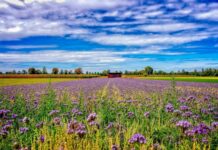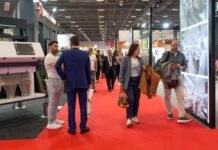A new study now shows that the global wheat production could reduce by 13 per cent by mid-century (the year 2050) as a result of wheat blast, a devastating disease caused by the fungal pathogen Magnaporthe oryzae pathotype Triticum fueled by the rising climate change phenomenon.
The disease first emerged in Brazil in 1985 and has been spreading to both neighbouring and distant countries and now under climate change conditions, it is predicted to spread primarily in tropical regions putting 6.4 million hectares of arable land at risk.
This will be further exacerbated by climate change to 13.5 million hectares by mid-century attributed to a combination of rising temperatures and prolonged leaf wetness caused by higher relative humidity (RH) which create conditions for the pathogen to potentially develop and spread.
“A more humid and warmer climate in the future (Representative Concentration Pathway 8.5) is likely to increase the area suitable for wheat blast infection, particularly in the Southern Hemisphere, and reduce global wheat production by 69 million tons per year (13% decrease) by 2050,” read the study in part.
Such areas are typically concentrated in lower latitudes closer to the Equator, where optimal environmental conditions for wheat blast are more likely to occur.
In the 2021–2022 season, wheat was grown on 222 million hectares globally, producing 779 million metric tons of grain, however, this is continuously affected by evolving pests and diseases spreading to new areas as a result of agricultural practices, climate and global trade change.
Wheat blast spreading to other regions
Wheat blast which has now become a substantial threat to wheat production in warm and humid areas was first observed outside South America in February 2016 when it was recorded in Bangladesh (Asia) and shortly after, in 2018, it was observed for the first time in Zambia (Africa).
And now according to the study, there is potential yield loss even in regions where the disease is not yet present.
“Other countries or regions like Uruguay, Central America, southeastern USA, East Africa, India and Eastern Australia are currently unaffected but simulations are vulnerable to wheat blast,” said the study.
Using the wheat simulation (DSSAT Nwheat) model, the study further show that under climate change scenarios for the period 2040–2070, wheat blast is predicted to spread primarily in the tropics and Southern Hemisphere as temperature and relative humidity (RH) increase.
A global climate change study using the same DSSAT Nwheat model and input data reported a mean climate change grain yield impact of 1.9% and shows country and regional climate change impact.
In South America, wheat blast could further expand mainly in countries that already suffer losses due to the disease, including Brazil, Argentina, Bolivia and Paraguay.
The projections suggest that the presence of wheat blast may also increase in the USA and Mexico, and that the disease may affect previously unaffected countries including Uruguay, Japan, Italy, Spain and New Zealand, among others.
Wheat blast spread in Africa and Asia
In Africa, countries including Zambia, Ethiopia, Kenya and Congo may suffer from yield losses resulting from the expansion of wheat blast into vulnerable areas.
Conversely, under future climates, some parts of India may become less susceptible to wheat blast infection if dry seasonal conditions prevail with more frequent extreme high temperatures (above 35 °C) during the latter part of the wheat growing season, shows the study.
Wheat blast may also expand into southeast China, potentially incurring yield losses. Recent studies strongly suggest that M. oryzae pathotypes capable of infecting wheat have, in fact, the potential to spread into China with rising temperatures.
Oceania and North America
In Oceania and North America only a small portion of wheat growing area is currently vulnerable to wheat blast, but under climate change this may respectively expand to 5% and 12% of the total wheat area of these countries.
Europe and other countries
The cold climate in Europe and other countries where snow falls reduces the probability of infection. But climate change will potentially alter the distribution of different insect pests and diseases over time, the study warned.
It is possible for European places near the Mediterranean to experience a favourable climate for the fungal infection. This includes Italy and parts of southern France and Spain, alerted the paper.
Extreme vulnerability areas
South America and Africa will be the most vulnerable regions to wheat blast in the future climate, with up to 75 per cent of their wheat acreage at risk by 2050, warned the team of researchers from institutes International Maize and Wheat Improvement Center (CIMMYT), Brazilian Agricultural Research Corporation, University of Florida, International Food Policy Research Institute and Technical University Munich.
These areas are among the most vulnerable to the direct impacts of climate change, where food security is already a considerable concern and wheat consumption is increasing, especially in urban areas.
By 2050, there will be more wheat blast-prone locations due to a confluence of factors, including increasing temperatures and persistent leaf moisture, which foster the growth and dissemination of the pathogen.
This is of concern since the fungus has the potential to affect not only wheat but also other major food crops.
Adapting to wheat blast as climate changes
Given the threat to important wheat-growing areas around the world from wheat blast, farmers may need to shift to less susceptible crops to mitigate production and financial losses, suggested the study.
It suggested multiple strategies to manage the disease, citing examples of the countries affected. For instance, maize cultivation is gradually replacing wheat in midwest Brazil. Breeding blast-resistant wheat is also a very important strategy that could mitigate future losses in new vulnerable areas and has already been initiated, it said.
In fact, the wheat blast-resistant varieties produced by CIMMYT in collaboration with National Agricultural Research Systems partners have proven useful in reducing the impact of wheat blast.
Wheat blast-promoting conditions can also be avoided by choosing the appropriate sowing date. The adjustment in planting dates is another effective mitigation strategy against the disease, according to the researchers.
Rain, followed by hot, humid weather during the flowering stage, can promote disease development. So, to reduce the risk of infection, the paper recommended avoiding early planting in central Brazil and late planting in Bangladesh, as these periods coincide with high temperatures and relative humidity due to increased precipitation levels.









[…] News Source: farmersreviewafrica.com […]
Comments are closed.